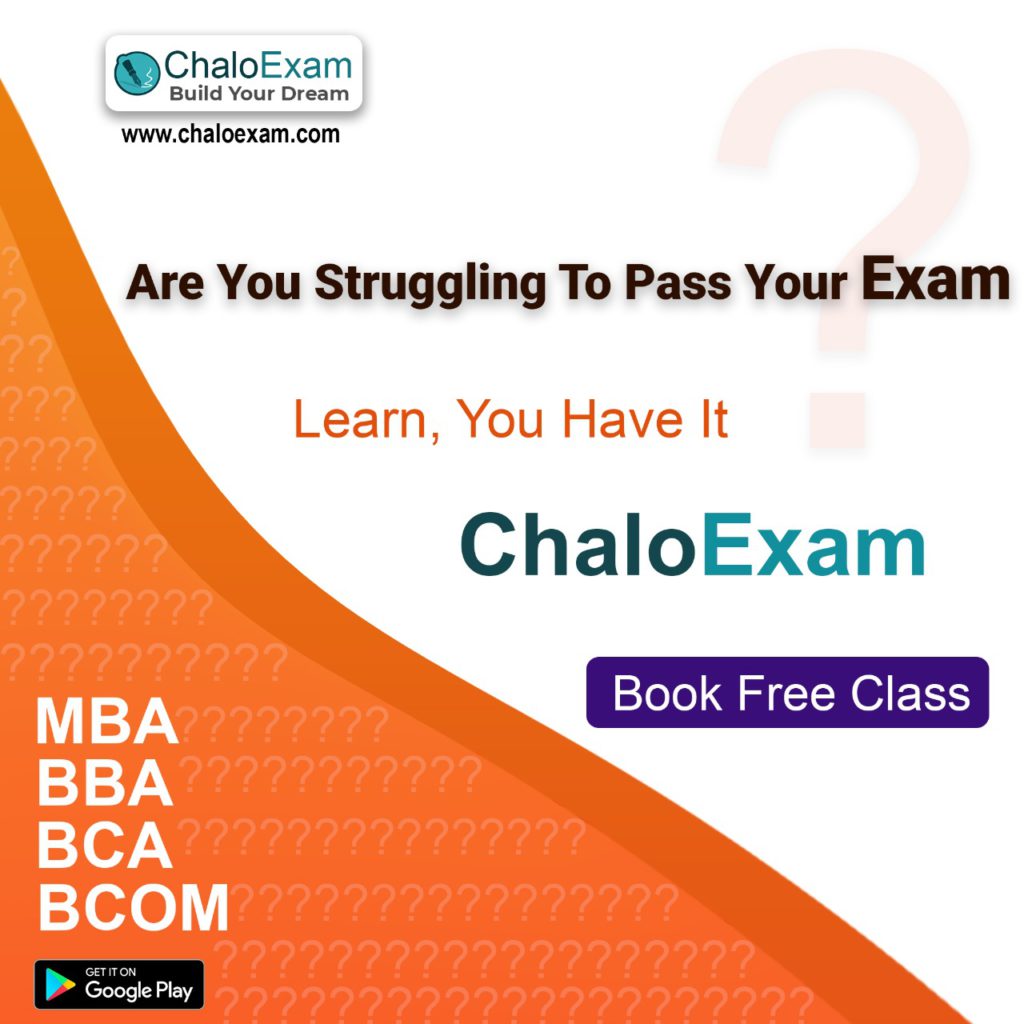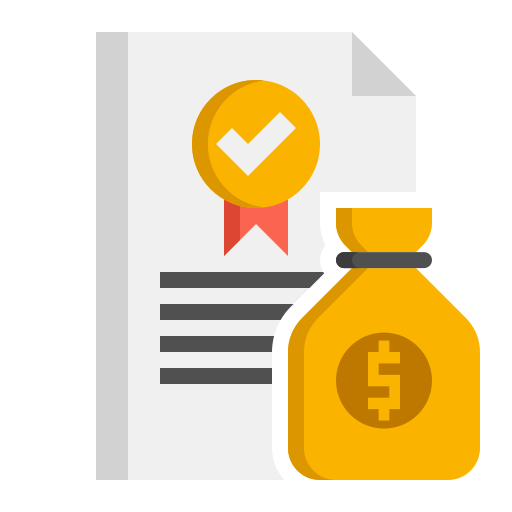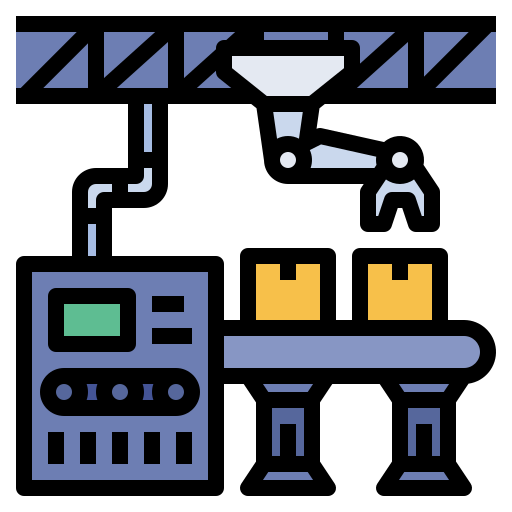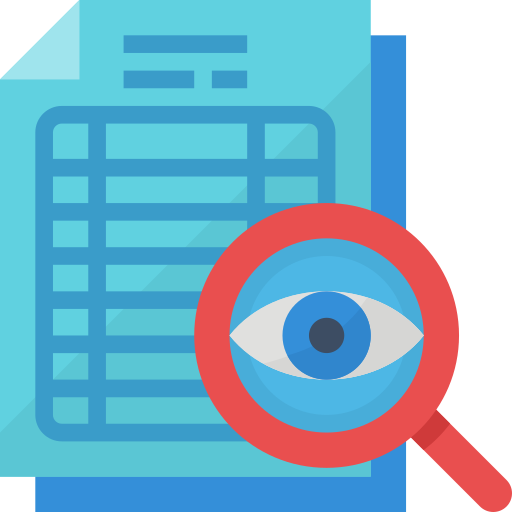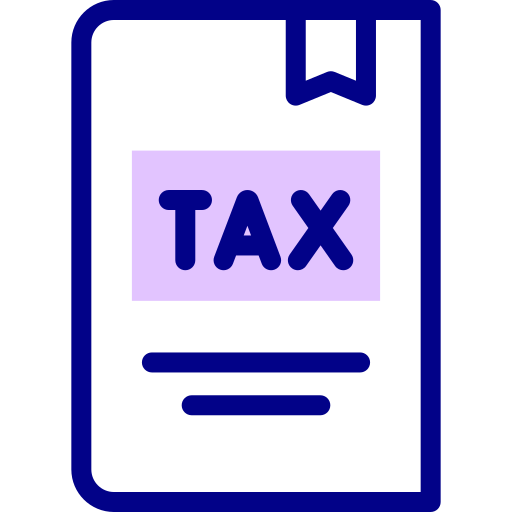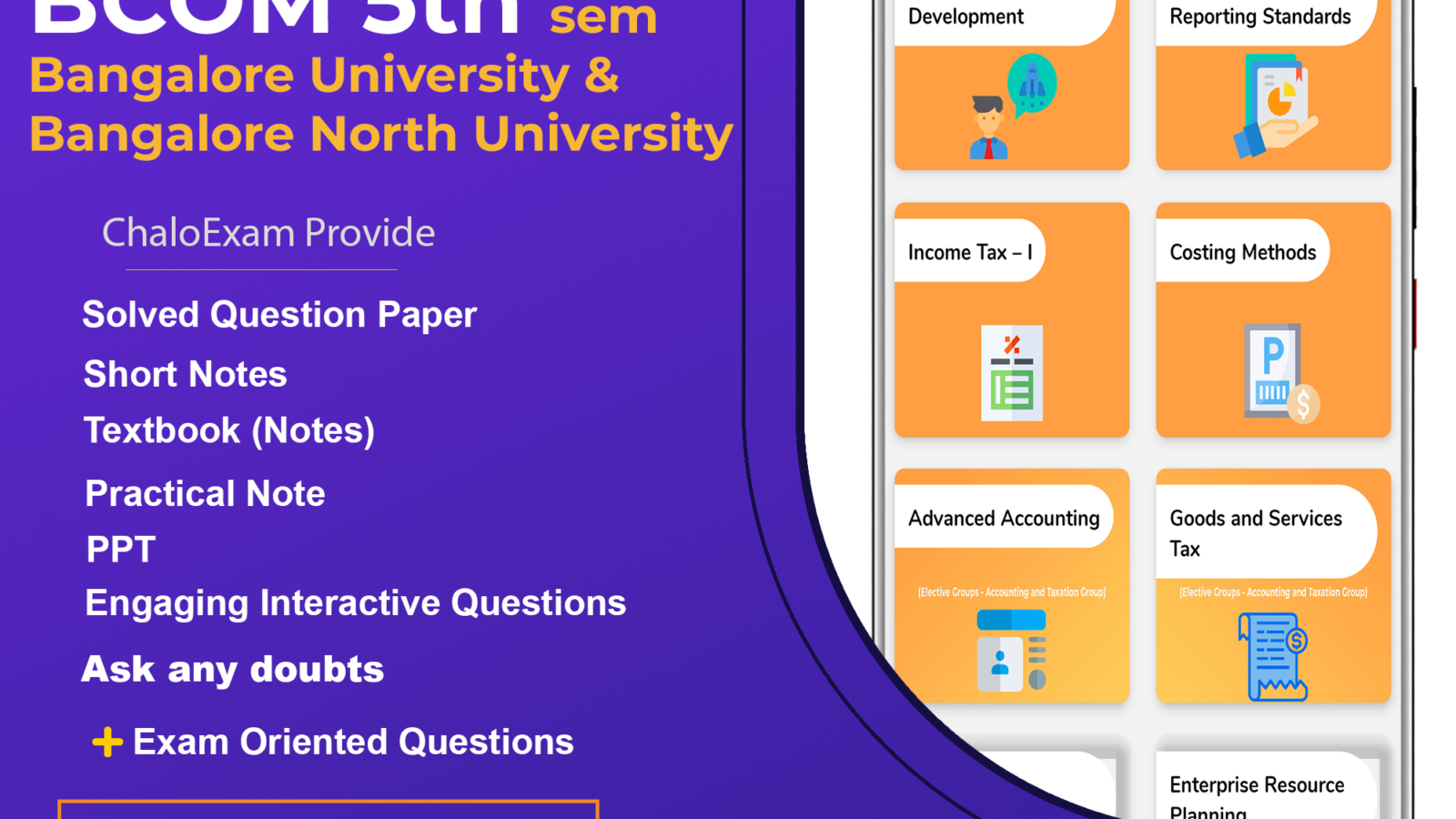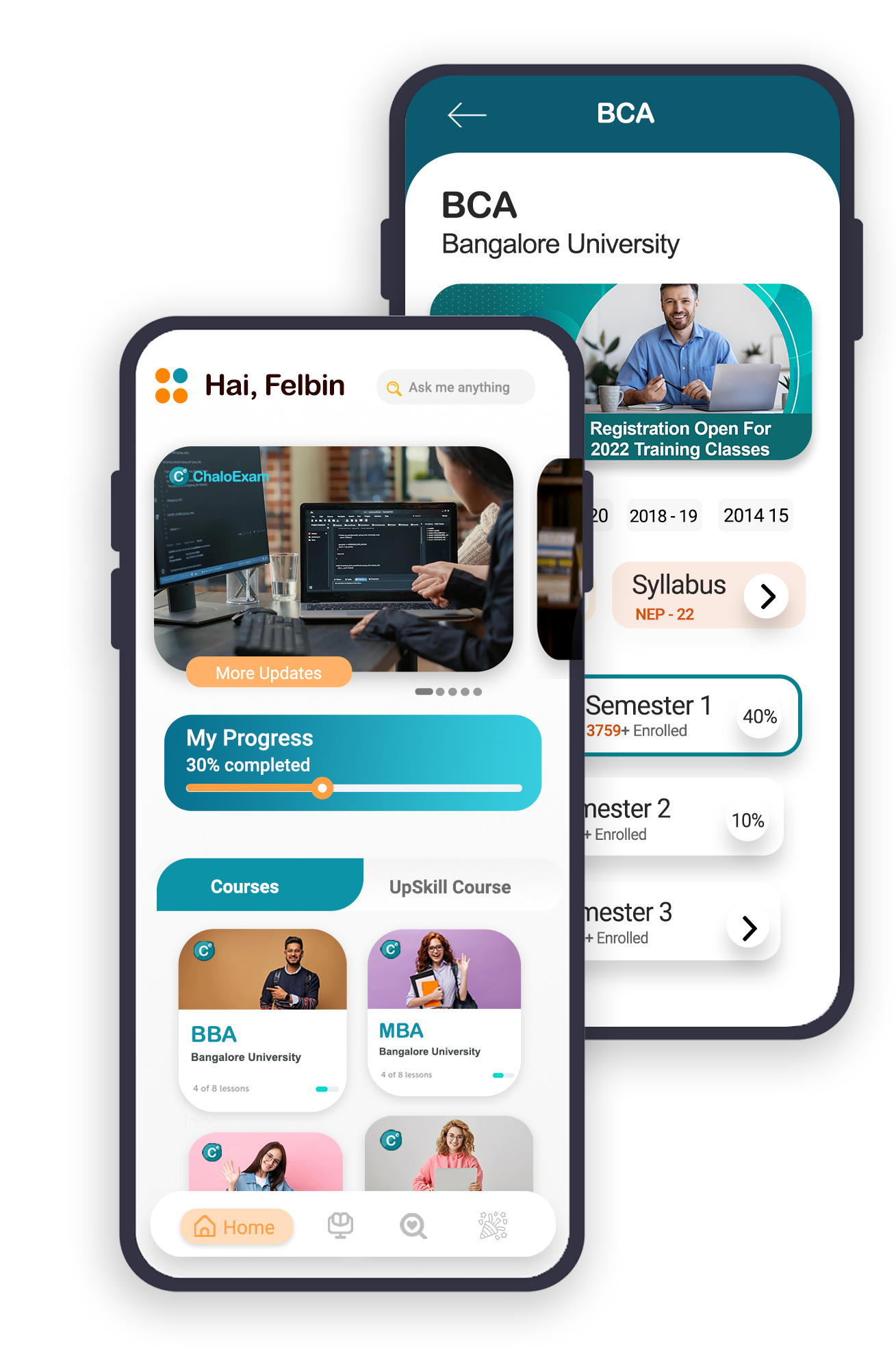5.1 ENTREPRENEURIAL MANAGEMENT
OBJECTIVE
The objective is to enable students to understand the basic concepts of entrepreneurship and prepare a business plan to start a small industry.
Unit 1: ENTREPRENEURSHIP 12 Hrs Introduction – Meaning & Definition of Entrepreneurship, Entrepreneur & Enterprise – Differences between Entrepreneurship, Entrepreneur & Enterprise – Functions of Entrepreneur – Role of Entrepreneur for Economic Development - Factors influencing Entrepreneurship - Pros and Cons of being an Entrepreneur – Differences between Manager and Entrepreneur – Qualities of an Entrepreneur – Types of Entrepreneurs. Entrepreneurship Development- Need – Problems – National and State Level Institutions
Unit 2: SMALL SCALE INDUSTRIES 10 Hrs Small Scale Industries - Tiny Industries - Ancillary Industries - Cottage Industries – Definition – Meaning - Product Range - Capital Investment - Ownership Patterns - Importance and Role played by SSI in the development of the Indian Economy - Problems faced by SSI‟s and the steps taken to solve the problems - Policies Governing SSI‟s
Unit 3: STARTING A SMALL INDUSTRY 12 Hrs Concept of Business opportunity, scanning the environment for opportunities, evaluation of alternatives and selection based on personal competencies. - An overview of the steps involved in starting a business venture – Location, Clearances and Permits required, Formalities, Licensing and Registration Procedures - Assessment of the market for the proposed project - Importance of financial, technical and social feasibility of the project.
Unit 4: PREPARING THE BUSINESS PLAN (BP) 10 Hrs Business Plan, Importance of BP, Preparation of BP, Typical BP format - Financial aspects of the BP - Marketing aspects of the BP - Human Resource aspects of the BP - Technical aspects of the BP - Social aspects of the BP - Preparation of BP - Common pitfalls to be avoided in preparation of a BP
Unit 5: IMPLEMENTATION OF THE PROJECT AND SICKNESS IN SSIs 12 Hrs Financial assistance through SFC‟s, SIDBI, Commercial Banks, KSIDC, KSSIC, IFCI, - Non-financial assistance from DIC, SISI, EDI, SIDO, AWAKE, TCO, TECKSOK, KVIC - Financial incentives for SSI‟s and Tax Concessions - Assistance for obtaining Raw Material, Machinery, Land and Building and Technical Assistance - Industrial Estates – Role and Types. Sickness: Meaning and definition of a sick industry - Causes of Industrial Sickness - Preventive and Remedial Measures for Sick Industries
SKILL DEVELOPMENT
∙ Preparation of a Project report to start a SSI Unit.
∙ Preparing a letter to the concerned authority-seeking license to the SS Unit, You propose to start. ∙ Format of a business plan.
∙ A Report on the survey of SSI units in the region where college is located.
∙ Chart showing financial assistance available to SSI along with rates of interest.
43
∙ Chart showing tax concessions to SSI both direct and indirect.
∙ Success stories of Entrepreneurs in the region.
BOOKS FOR REFERENCE
- Vasant Desai: The Dynamics of Entrepreneurship Development and Management, HPH 2. Mark. J. Dollinger, Entrepreneurship – Strategies and Resources, Pearson Edition. 3. Satish Taneja: Entrepreneur Development, HPH.
- UdaiPareek and T.V. Rao, Developing Entrepreneurship
- S.V.S. Sharma, Developing Entrepreneurship, Issues and Problems, SIET, Hyderabad 6. Srivastava, A Practical Guide to Industrial Entrepreneurs, Sultan Chand. 7. Government of India, Report of the committee on small and medium entrepreneurs, 1975 8. VidyaHattangadi ; Entrepreneurship, HPH.
- N.V.R. Naidu : Management and Entrepreneurship, I.K. International 10. Bharusali, Entrepreneur Development,
- K. Venkataramanappa, Entrepreneurial Development, SHB Publications 12. Anil Kumar : Small Business and Entrepreneurship, I.K. International 13. Rekha & Vibha – Entrepreneurial Management, VBH.
44
5.2 COMPUTER APPLICATION IN BUSINESS
OBJECTIVE
The objective of the subject is to make the students understand the concept of information systems used in business and to know the latest trends in doing business in internet environment.
Unit 1: INTRODUCTION TO INFORMATION SYSTEM 10 Hrs Meaning and definition of system, information and information system – business information system – Features of Information system – Uses of Business Information Systems, Users of Information Systems – Components of Business Information Systems.
Unit 2: TYPES OF INFORMATION SYSTEMS 14Hrs Management Support Systems (MSS), Management Information systems, , Transaction Processing systems, Decision Support Systems (DSS), Group Decision Support System (GDSS), Office Automation system, Process Control systems, Executive Information systems, Levels of management and Information systems.
Unit 3: MS OFFICE 12 Hrs MS Word – editing a document- Formatting – Spell Checking – Page setup, Using tabs, Tables and other features Mail Merge, MS Excel – building work sheet- data entry in work sheets, auto fill – working with simple problems- formula – statistical analysis, sort, charts, MS Power point – Design, Side Show – Presentation.
Unit 4: DATABASE MANAGEMENT SYSTEMS 14 Hrs Introduction- Purpose of Database Systems, Views of data, Data Models, Database language, Transaction Management, Storage Management, Database Administrator, Database Users, Overall System Structure, Different types of Database Systems
Unit 5: ACCOUNTING SOFTWARE 06Hrs Introduction to Tally, Opening new company, Safety of Accounts or Password, Characteristics, Making Ledger Accounts, writing voucher, voucher entry, making different types of voucher, correcting sundry debtors an sundry creditors accounts, preparation of Trail Balance, Accounts books, Cash Book, Bank Books, Ledger Accounts, Group Summary, Sales Register and Purchase Register, Journal Register, Statement of Accounts, & Balance Sheet.
SKILL DEVELOPMENT
∙ Maintain a Record on Practicals.
BOOKS FOR REFERENCE
- James Obrein, Management Information Systems, Tata McGraw Hill
- M. Suman _ Computer Application Business, VBH
- R.G. Saha – Computer Application Business, HPH.
- Amrutha Gowri & Soundrarajana A, Computer Application Business, SHBP. 5. Manjunath, GunduRao – Computer Business Applications, HPH.
- Sudaimuthu& Anthony: Computer Applications in Business, HPH.
45
- S. Perekar, Anindita Hazra; Computer Application in Business 8. Srivatasava : Enterprise Resource Planning I.K. International 9. S Sadagopan, Enterprise resource planning (ERP), Tata McGraw Hill 10. S.P. Rajagopal, Computer Application in Business
- C.S.V.Murthy: Management Information, HPH
46
5.3 INVESTMENT MANAGEMENT
OBJECTIVES:
- To enable develop skills in analyzing various types of securities.
- To develop necessary skills in students to design and revise a portfolio of securities.
Unit 1: Introduction Investment Management 10Hrs Investment management, nature and scope, investment avenues, types of financial assets and real assets, Security return and risk – Systematic and unsystematic risk - sources of risk, Measurement of risk and return, sources of investment information, Fixed income – securities – bonds, preference shares – sources of risk, valuation, duration of bonds – theory of interest rates – yield curve, Bond innovations and their valuation.
Unit 2: Securities Analysis 14Hrs Analysis of variable income securities, fundamental analysis – analysis of economy, industry analysis, company analysis – financial and non – financial, Equity valuation models, Options, futures, forwards, warrants, and their valuations, Technical analysis – Dow’s theory, charts – Efficient market hypothesis and its implications, Tax aspects of investment, Securities Trading procedure. A Critical Survey of software packages for security analysis.
Unit 3: Portfolio Management 10Hrs Meaning of portfolio management, portfolio analysis, why portfolios? Portfolio objectives, portfolio management process, selection of securities. Portfolio theory, Markowitz Model, Sharpe’s single index model. Efficient frontier with Lending and borrowing, optimal portfolio capital Asset pricing model, Arbitrage pricing theory two factor and multi factor models.
Unit 4: Portfolio Management Strategies 12Hrs Bond Portfolio Management strategies, Equity portfolio management strategies, strategies using derivatives, hedging. Portfolio revision – rebalancing plans, portfolio evaluation, Sharpe’s index, Treynor’s measure and Jenson’s measure.
Unit 5: Mutual Funds 10Hrs Mutual funds, Investors life cycle, Personal investment, Personal Finance, Portfolio Management of funds in banks, insurance companies, pension funds, International investing, International funds management, emerging opportunities. A brief survey of software packages for Portfolio Management.
Skill Development
Seminars, Group Discussion and Case Studies on various aspects of syllabus.
Books for Reference
- Bombay Stock Exchange Directory.
- Donald E. Fischer and Ronald J. Jordan: Security Analysis and Portfolio Management, Pearson Ed. 3. Stanely S.C. Haung Maury Stall: Investment Analysis and Management, Allyn and Bacon Inco., Massachustes. 4. Jerome B. Cohen and Edward D. Zinbarg Etal: Investment Analysis and Portfolio Management, Ricchard D., Irwin Inc., Illinois.
- J.C. Fancis: Investment Analysis and Management
- Panduan Puneethavarty, Securities Analysis and Portfolio Management, Vikas Pub. House.
- Fuller & Farrel, Modern Investment and Security Analysis, McGraw Hill International.
47
5.4 MANAGEMENT ACCOUNTING
OBJECTIVE
The objective of this subject is to enable the students to understand the analysis and interpretation of financial statements with a view to prepare management reports for decision-making.
Unit 1: INTRODUCTION TO MANAGEMENT ACCOUNTING 06 Hrs Meaning – Definition – Objectives – Nature and Scope of Management Accounting – Relationship between Financial Accounting, Management Accounting, and Cost Accounting
Unit 2: RATIO ANALYSIS 16 Hrs Meaning and Definition of Ratio, Accounting Ratio and Ratio Analysis – Uses – Limitations - Classification of Ratios – Problems on Ratio Analysis - Preparation of Trading and Profit & Loss Account and Balance Sheet with the help of Accounting Ratios
Unit 3: FUND FLOW ANALYSIS 12Hrs Meaning and Concept of Fund – Meaning and Definition of Fund Flow Statement – Uses and Limitations of Fund Flow Statement – Procedure of Fund Flow Statement – Statement of changes in Working Capital – Statement of Funds from Operation – Statement of Sources and Application of Funds – Problems.
Unit 4: CASH FLOW ANALYSIS 12Hrs Meaning and Definition of Cash Flow Statement – Differences between Cash Flow Statement and Fund Flow Statement – Uses of Cash Flow Statement – Limitations of Cash Flow Statement – Provisions of AS-3 – Procedure of Cash Flow Statement – Concept of Cash and Cash Equivalents - Cash Flow from Operating Activities – Cash Flow from Investing Activities and Cash Flow from Financing Activities – Preparation of Cash Flow Statement according to AS-3 (Indirect Method Only).
Unit 5: MARGINAL COSTING AND BUDGETORY CONTROL 10Hrs Marginal Costing: Meaning, Features and Assumptions - Calculation of Break Even Point – Equation Method, Graphic Method, Problems .
Budgetary Control: Introduction – Meaning & Definition of Budget and Budgetary Control – Objectives of Budgetory Control – Classification of Budgets –Functional Budgets – Problems on Flexible Budgets
SKILL DEVELOPMENT
- Collection of financial statements of any one organization for two years and preparing comparative statements
- Collection of financial statements of any two organization for two years and prepare a common Size Statements
- Collect statements of an Organization and Calculate Important Accounting Ratio‟s ● Draft a report on any crisis in an organization.
48
BOOKS FOR REFERENCE
- PN Reddy & Appanaiah, Essentials of Management Accounting, HPH. 2. J. Made Gowda: Management Accounting, HPH.
- R.G. Saha – Management Accounting, VBH.
- Dr. S.N. Maheswari, Management Accounting, VBH. 5. Sexana, Management Accounting, Tata McGraw Hill
- Sudhindra Bhatt; Management Accounting, Excel Books. 7. Dr. S.N. Goyal and Manmohan, Management Accounting 8. Jawaharlal : Essentials of Managerial Accounting, HPH. 9. B.S. Raman, Management Accounting, United Publishers. 10. Sharma and Gupta, Management Accounting, S J Publishers. 11. Soundra RajanA & Venkataramana. K, Management Accounting, SHBP.










